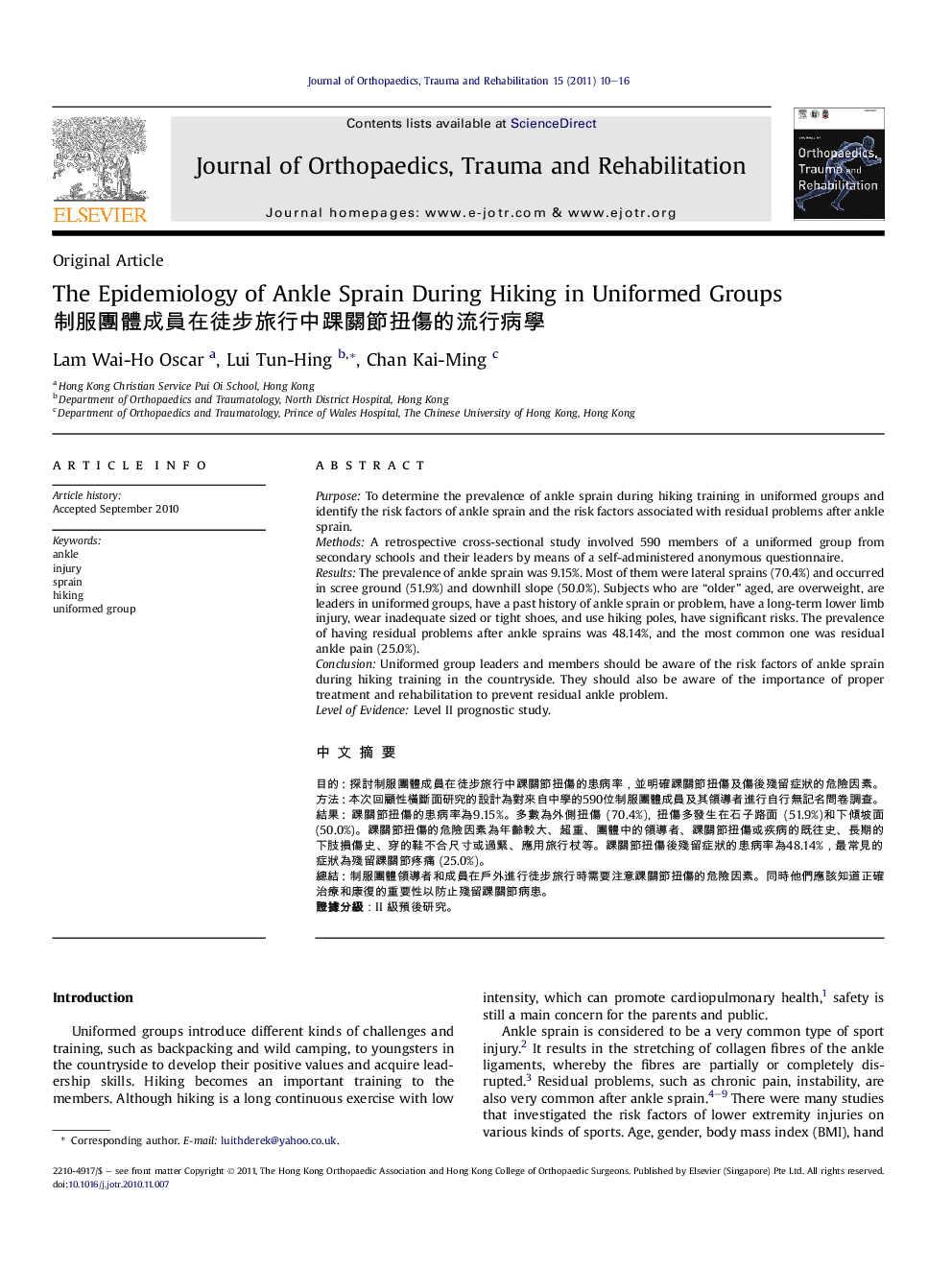| Article ID | Journal | Published Year | Pages | File Type |
|---|---|---|---|---|
| 4072586 | Journal of Orthopaedics, Trauma and Rehabilitation | 2011 | 7 Pages |
PurposeTo determine the prevalence of ankle sprain during hiking training in uniformed groups and identify the risk factors of ankle sprain and the risk factors associated with residual problems after ankle sprain.MethodsA retrospective cross-sectional study involved 590 members of a uniformed group from secondary schools and their leaders by means of a self-administered anonymous questionnaire.ResultsThe prevalence of ankle sprain was 9.15%. Most of them were lateral sprains (70.4%) and occurred in scree ground (51.9%) and downhill slope (50.0%). Subjects who are “older” aged, are overweight, are leaders in uniformed groups, have a past history of ankle sprain or problem, have a long-term lower limb injury, wear inadequate sized or tight shoes, and use hiking poles, have significant risks. The prevalence of having residual problems after ankle sprains was 48.14%, and the most common one was residual ankle pain (25.0%).ConclusionUniformed group leaders and members should be aware of the risk factors of ankle sprain during hiking training in the countryside. They should also be aware of the importance of proper treatment and rehabilitation to prevent residual ankle problem.Level of EvidenceLevel II prognostic study.
中文摘要目的探討制服團體成員在徒步旅行中踝關節扭傷的患病率,並明確踝關節扭傷及傷後殘留症狀的危險因素。方法本次回顧性橫斷面研究的設計為對來自中學的590位制服團體成員及其領導者進行自行無記名問卷調查。結果踝關節扭傷的患病率為9.15%。多數為外側扭傷 (70.4%), 扭傷多發生在石子路面 (51.9%)和下傾坡面(50.0%)。踝關節扭傷的危險因素為年齡較大、超重、團體中的領導者、踝關節扭傷或疾病的既往史、長期的下肢損傷史、穿的鞋不合尺寸或過緊、應用旅行杖等。踝關節扭傷後殘留症狀的患病率為48.14%,最常見的症狀為殘留踝關節疼痛 (25.0%)。總結制服團體領導者和成員在戶外進行徒步旅行時需要注意踝關節扭傷的危險因素。同時他們應該知道正確治療和康復的重要性以防止殘留踝關節病患。證據分級:II 級預後研究。
